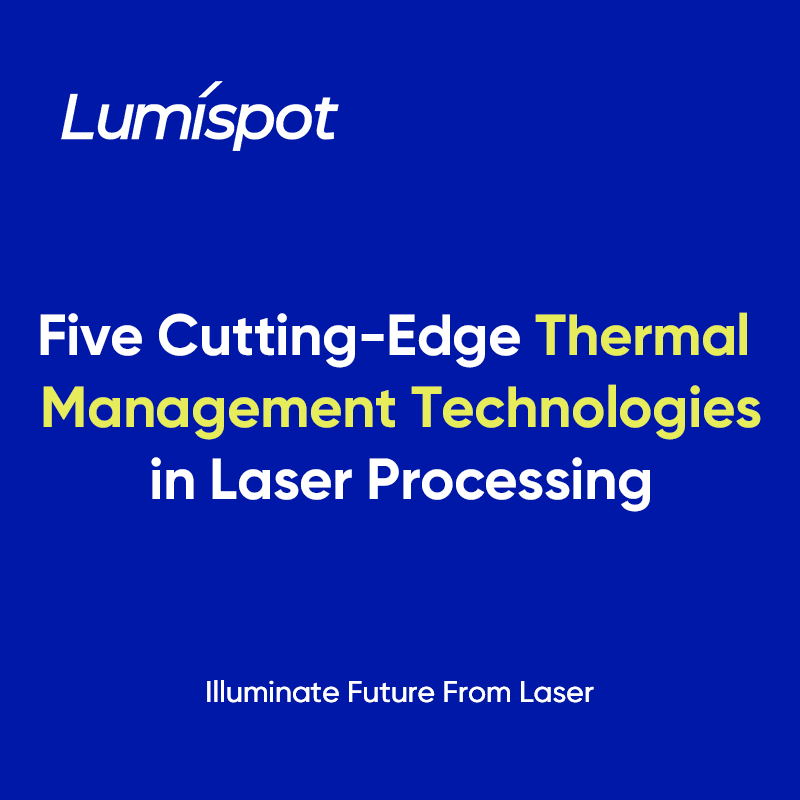In the field of laser processing, high-power, high-repetition-rate lasers are becoming the core equipment in industrial precision manufacturing. However, as power density continues to rise, thermal management has emerged as a key bottleneck that limits system performance, lifespan, and processing accuracy. Traditional air or simple liquid cooling solutions are no longer sufficient. Innovative cooling technologies are now driving a leap forward in the industry. This article unveils five advanced thermal management solutions to help you achieve efficient and stable laser processing systems.
1. Microchannel Liquid Cooling: A “Vascular Network” for Precision Temperature Control
① Technology Principle:
Micron-scale channels (50–200 μm) are embedded in the laser gain module or fiber combiner. High-speed circulating coolant (such as water-glycol mixtures) flows directly in contact with the heat source, achieving extremely efficient heat dissipation with heat flux densities exceeding 1000 W/cm².
② Key Advantages:
5–10× improvement in heat dissipation efficiency over traditional copper block cooling.
Supports stable continuous laser operation beyond 10 kW.
Compact size allows integration into miniaturized laser heads, ideal for space-constrained production lines.
③ Applications:
Semiconductor side-pumped modules, fiber laser combiners, ultrafast laser amplifiers.
2. Phase Change Material (PCM) Cooling: A “Thermal Reservoir” for Heat Buffering
① Technology Principle:
Uses phase change materials (PCMs) such as paraffin wax or metal alloys, which absorb large amounts of latent heat during solid-liquid transitions, thereby periodically buffering peak thermal loads.
② Key Advantages:
Absorbs transient peak heat in pulsed laser processing, reducing instantaneous load on the cooling system.
Reduces energy consumption of liquid cooling systems by up to 40%.
③ Applications:
High-energy pulsed lasers (e.g., QCW lasers), 3D printing systems with frequent transient thermal shocks.
3. Heat Pipe Thermal Spreading: A Passive “Thermal Highway”
① Technology Principle:
Utilizes sealed vacuum tubes filled with working fluid (such as liquid metal), where evaporation-condensation cycles rapidly transfer localized heat across the entire thermal substrate.
② Key Advantages:
Thermal conductivity up to 100× that of copper (>50,000 W/m·K), enabling zero-energy thermal equalization.
No moving parts, maintenance-free, with a lifespan up to 100,000 hours.
③ Applications:
High-power laser diode arrays, precision optical components (e.g., galvanometers, focusing lenses).
4. Jet Impingement Cooling: A High-Pressure “Heat Extinguisher”
① Technology Principle:
An array of micro-nozzles sprays coolant at high speeds (>10 m/s) directly onto the heat source surface, disrupting the thermal boundary layer and enabling extreme convective heat transfer.
② Key Advantages:
Local cooling capacity up to 2000 W/cm², suitable for kilowatt-level single-mode fiber lasers.
Targeted cooling of high-temperature zones (e.g., laser crystal end faces).
③ Applications:
Single-mode high-brightness fiber lasers, nonlinear crystal cooling in ultrafast lasers.
5. Intelligent Thermal Management Algorithms: AI-Driven “Cooling Brain”
① Technology Principle:
Combines temperature sensors, flow meters, and AI models to predict thermal loads in real time and dynamically adjust cooling parameters (e.g., flow rate, temperature).
② Key Advantages:
Adaptive energy optimization improves overall efficiency by over 25%.
Predictive maintenance: thermal pattern analysis enables early warnings for pump source aging, channel blockage, etc.
③ Applications:
Industry 4.0 intelligent laser workstations, multi-module parallel laser systems.
As laser processing advances toward higher power and greater precision, thermal management has evolved from a “supporting technology” to a “core differentiating advantage.” Choosing innovative cooling solutions not only extends equipment life and enhances processing quality but also significantly reduces total operating costs.
Post time: Apr-16-2025

